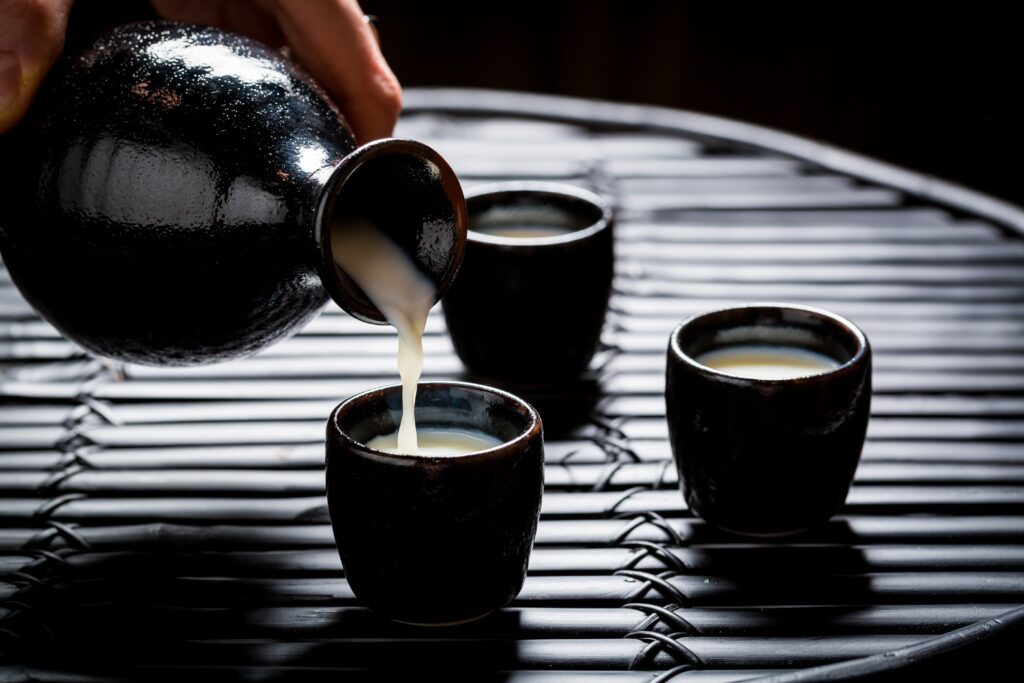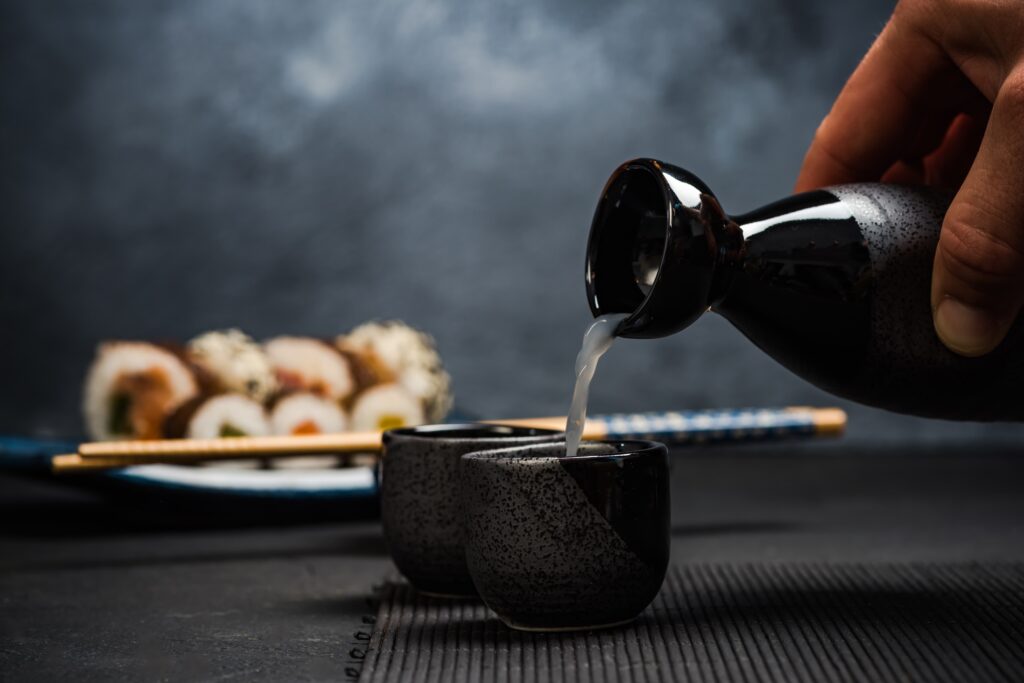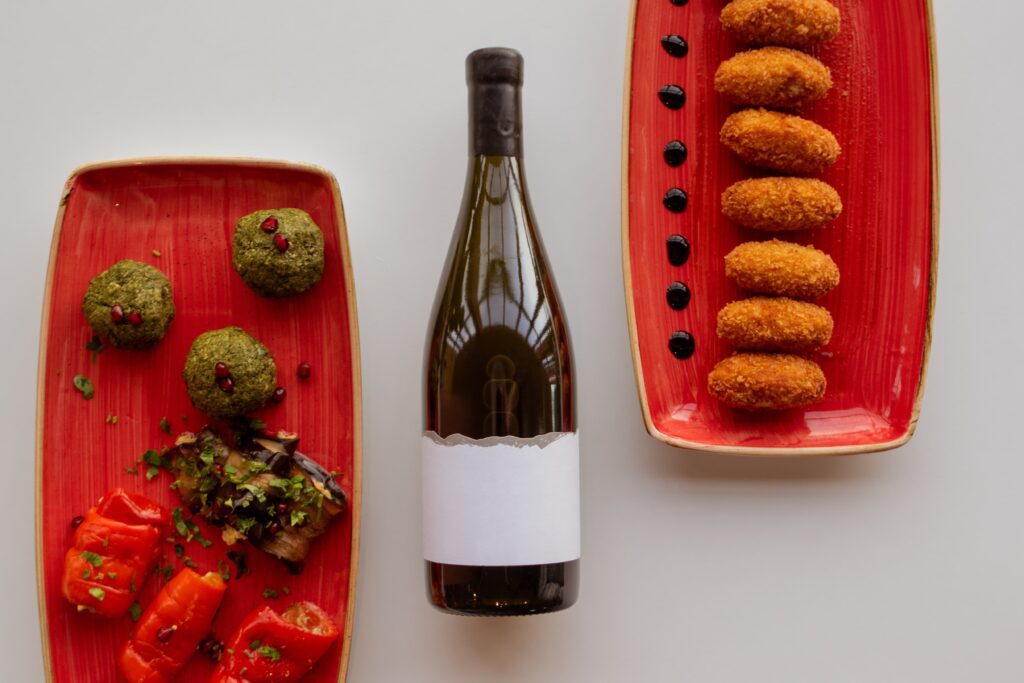Welcome to the world of Sake, where tradition meets refinement, and each sip tells a story of centuries-old craftsmanship. In this blog, we embark on a journey through the rich tapestry of Japanese rice wine, exploring its origins, diverse varieties, and the art of pairing it with delectable cuisine.
We will unravel the mystique surrounding Sake, learn about its brewing process, the significance of rice polishing, and the unique terminology that defines its diverse spectrum. We will also go over the various types of the sake and how to pair it with the best food imaginable.
What is Sake?
Simply, sake is a Japanese rice wine. It has a diverse number of flavors that ultimately depend on factors like the type of rice used, water source, and brewing process. Like whisky, there are also many different varieties of Sake classes too.
Sake is a drink that is traditionally used with special ceremonies and is gently warmed in porcelain bottles. It is then poured into smaller cups to be enjoyed in small quantities. The temperature can be different depending on why type of sake is being served, like most wines.
Sake is also enjoyed in more casual settings such as business lunches, dinner dates, nights out with your friends, or even at our Kobe Japanese Steakhouses!
What is Sake Made of & How is it Made?
Sake is made from four key ingredients:
- Fermented Rice
- Water
- Koji (Mold)
- Yeast
The rice is the most important as sake is a rice wine. Unlike most wines, Sake is brewed similar to beer. This process causes the alcohol to be particularly stronger than many common wines and beers.
During the fermentation process, the rice and bran are separated. Bran is the hard layer of crain surrounding the rice. This releases extra yeast into the mixture and can even be left in some forms of sake to add more flavor.
While what sake is made of is important, the ratio of these four ingredients ultimately determines the rice wine’s notes, flavors, and category.
How Strong is Sake & What Proof Is it?
Sake’s proof is typically a higher alcohol content than most beers or wines. Beer’s ABV normally comes in around 3-9% and wine generally falls between 9-16%.
However, sake‘s ABV usually scales between 18-20%. You would be hard pressed to find one of this high volume as sake is watered down before the bottling process. This brings the ABV down to around 15%.
The reason for the higher sake proof is because of the fermentation process and rice polishing. During the fermentation process, the outside of the rice grains are weakened and broken down, releasing additional yeast into the liquid. This ferments and results in a higher sake proof.
History of Sake
While the origin of Sake is unclear, most historians believe that it was first created in 3000 BC. Over time, the brewing techniques changed, but the ingredients remained the same. Around 710 AD, the process became more sophisticated with dedicated breweries starting across Japan.
It would evolve through the feudal era (12th-19th centuries) as sake guilds, called sakagura, were created to regulate production. But as the modern age grew closer, advances in technology like steam power and refrigeration led to increased efficiency and quality.
Today, sake is internationally recognized as a cherished part of Japanese culture and cuisine.
Types of Sake

There is no one type of sake, the same as there is no one type of wine. Each type varies based on different brewing and milling methods. Each process gives the sake a distinct flavor and would be enjoyed with different cuisine.
Here are a few of the popular types of sake:
Junmai-Shu
This version contains a more pure, unadulterated sake. No alcohol, additional starch or sugar is added to the mixture to keep the product natural.
It also uses Seimai Buai (Rice Polishing Rate) of 70% minimum. This means that up to 70% of the rice will maintain their original size. Around 30% of the grains used will have their outer layer removed as referenced earlier.
Tokubetsu Junmai
This type of sake is made with only rice and rice koji. Regular forms of Tokubetsu Junmai have about 60% of the rice maintain their original size.
However, the word tokubetsu means “special” in Japanese. So when you see this word as part of your sake order, it may be different. Many of the practices used to make this type of sake will be followed, but other steps may be taken to achieve a certain level of flavor.
Ginjo-Shu
Ginjo-shu is made with 40% of milled rice. Generally, 60% of the rice will retain its size.
The flavor of ginjo-shu has been described as delicate and light, accompanied by a wonderful aroma.
Daiginjo-Shu
This is actually another form of Ginjo-Shu. However, it uses rice mash that includes milled rice anywhere between 35-50%.
It is incredibly fragrant with a full body, a delicate taste, and a short tail after your first sip.
Nama-zake
Namazake literally means the alcohol is not pasteurized. Because of this term, many of the sakes you have already learned about fit into this category. Namazake needs to be kept cold so the flavor and aroma are kept intact.
Usually, Namazake is cloudy in nature. Don’t be surprised if you find some koji rice still in the bottle. The taste is sweet and makes a great option to pair with desserts!
Futsu
This kind of sake is better known as “table sake.” Futsu also differs because there are no restrictions on the polish ratio.
The maker of the Futsu can choose to add distilled alcohol after the fermentation process finishes.
Food Pairings Options

Now nothing goes better with a nice drink than some absolutely delectable food pairing options! Just as people pair red wines with steak or white wines with chicken or fish, different sakes pair well with different foods.
Because of the composition of sake, it pairs well with a wide variety of foods. This is because of its lower acidity, iron, and sulfates when compared to more commercial wines. This allows seafood pairings to shine without enhancing any unwanted flavors.
These lower levels also make sake a great pairing option for highly acidic foods like pickles and salads.
So what are the rules to go by when you are looking to pair sake with your meal? Here are a few pieces of advice on what to match.
Intensity
Matching flavor-rich sake with flavor-rich foods, or vice versa, will bring out the best in your food and overall experience.
Aroma
Time to use your sense of smell! Food pairings with sake will depend on making sure they have a similar fragrance to one another.
For instance, a sake with a roasted aroma will pair much better with a grilled or stewed dish. These are generally going to be aged sakes.
Region
Depending on where your sake was brewed can be another factor on the best pairings. If the sake you chose was brewed along the coastlines of Japan, seafood will be the best pairing.
Meanwhile, if the sake was brewed more inland, dishes consisting of more earthy ingredients would be best. So if your dish is big on vegetables or kobe beef, order a sake brewed more inland than coastal.
Age
Pairing foods with the age of the sake is the last rule. Fresh foods like fruits and vegetables will be paired best with newer sake. Aged sake is best reserved for when you have these same ingredients, but with some age. Ingredients like dried fruits, pickled vegetables, and some aged cheese are better options.
Temperature
Always pair the temperatures. Hot with hot. Cold with cold. The stark contrast between the temperatures could lead to a less enjoyable experience.
Contrast
This is the only rule where pairings should be opposite. Sake, while a delicious treat, can also be used as a palate cleanser. Pairing the beverage with a meal of contrasting taste will allow both parts of your meal to shine.
Have a Round at Kobe

All this talking about sake made you thirsty? Want a fun night out with your friends and toast with the sake you know will be best with your meal? At Kobe Japanese Steakhouse, we have that and more awaiting you!
Come enjoy our teppanyaki style dining show or stop in for a round during happy hour. Kobe has locations all over central Florida waiting for you to come by and spend some time with our amazing staff. Book a reservation today or stop in at the bar to enjoy some sake on its own!